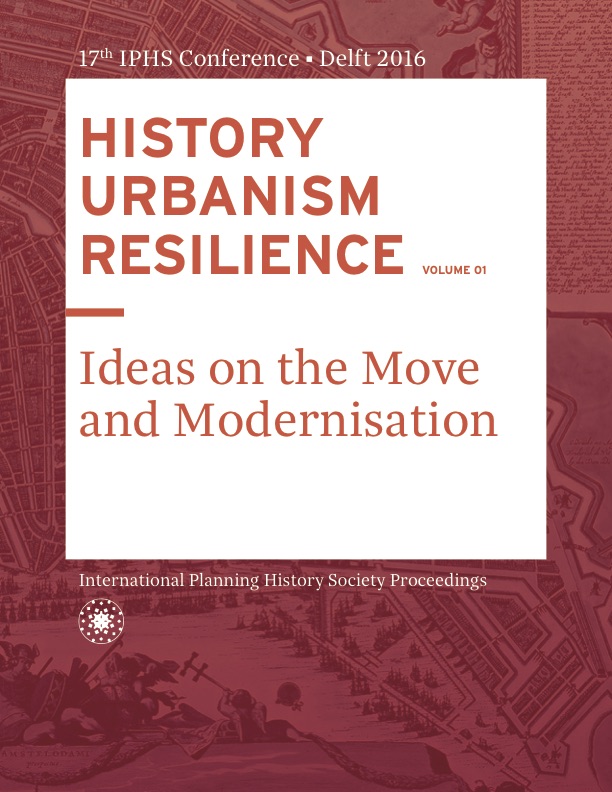Mapping transition: Divided cities of Jerusalem and Sarajevo
DOI:
https://doi.org/10.7480/iphs.2016.1.1193Abstract
Societies affected by the conflict are confronted by extreme and enforced urban changes that often extend into a transitional period. These changes vary, but in some cases they may lead to the development of divided cities.Taking many guises and playing different roles within conflicts, divided cities may become an arena for inter-group hostilities; a stage for the expression of antagonistic acts towards other groups; or even become an accommodative space and provide an opportunity for peace-building.
Cities may have long-term symbolic significance, they can symbolise the nature of the wider conflict itself, and may indeed be the epicentre of the most intense form of the conflict. Additionally, they may embody a planned policy of segregation.
The urban challenges of two divided cities: Jerusalem and Sarajevo will serve as case studies for cities in conflict and cities in transition respectively. This paper aims to map transition and to discuss the positive and negative outcomes of transition, as well as its impact on urban development and planning initiatives. The transitional period usually reveals more profoundly the consequences of conflict.
Sarajevo is not physically divided, however it still suffers from social division and the political and administrative division of the state. Complex state administrative organisation is the primary reason for insufficient planning policy and the chaotic state of planning. Altered demographics, land ownership, illegal or unlicensed construction, and the lack of administrative coordination are some of the consequences of the conflict which have had long term impacts on urban planning.
Jerusalem, on the other hand, as a politically divided city, mirrors the wider Palestinian-Israeli conflict and symbolises the essence of the historic dispute of both sides’ claims to the city. Throughout the history of negotiations, the city has been described as the “undivided, eternal capital of the Jewish people” by Israel, and Palestinians have insisted that no permanent solution will be reached without resolving the issue of Jerusalem, and their desire for it to serve as the capital of a Palestinian State.
On a geo-demographic level, the Jerusalem has witnessed extreme urban changes, due to the imposition of Israeli settlements that continue to be built in and around the city on occupied Palestinian land, challenging the identity and character of the city. On a functional level, up until the eve of the Peace Process, East Jerusalem was the primary urban centre of the West Bank and Gaza Strip, as it hosted the major services, media and political institutions for Palestinians. Gradually, Jerusalem has been torn out from its Palestinian urban context and Ramallah has become the new urban centre for the West Bank, especially since the beginning of the construction of the Separation Wall. This had led to the transfer of functions, professionals and businesses from Jerusalem to Ramallah.
The purpose of this paper is to depict the urban fabric and functionality, and future urban development within these cities, detached from their surroundings, whilst discussing urban changes under the pressure of conflict and transition.
References
Aganović, Mithat. Graditeljstvo i stanje drugih djelatnosti u Sarajevu u XX i prethodnim stoljećima, Svjetlost, Sarajevo, 2009.
Bollens, Scott A. Urban Peace Building in Divided Societies: Belfast and Johannesburg, Westview Press USA, Westview Press UK, Oxford. 1999.
Bollens, Scott A. On Narrow Ground: Urban Policy and Ethnic Conflict in Jerusalem and Belfast, State University of New York Press, Albany,2000.
Drewe, P., J-S. Klein & E. Hulsbergen, (eds.), The Challenge of Social Innovation In Urban Revitalization. In R. Nasrallah & A. Amin, The Case of Jerusalem: a Study in Complexity Techne Press, Amsterdam, Netherlands, 2008.
Hadi, Mahdi Abdul. (ed.). Dialogue on Jerusalem: PASSIA Meetings 1990-1998, Palestinian Academic Society for the Study of International Affairs (PASSIA), Jerusalem, 1998.
Garcia, Sofia and Kotzen, Bronwyn. Reconstructing Sarajevo: Negotiating Socio-Political Complexity, 2014.
Korjenčić, Aida. Spatial planning in Bosnia and Herzegovina, Legislative framework, Acta Geographica Bosniae et Herzegovinae, 2015
Ministry for Human Rights and Refugees Department for Housing Policy and Analytical Planning, HOUSING AND URBAN PROFILE of Bosnia and Herzegovina,An Outline of Devastations, Recovery and Development Perspectives, 2006.
Nasrallah, Rami. Divided Cities: Trends of Separation and Integration. In A.R. Friedman & R. Nasrallah (eds.), Divided Cities in Transition, IPCC, JIIS, Jerusalem, 2003.
Nasrallah, Rami. Jerusalem between the Eutopia of an Open City and the Reality of Separation. In A.R. Friedman & R. Nasrallah (eds.). Divided Cities in Transition, IPCC, JIIS, Jerusalem. 2003.
Nasrallah, Rami. Transformations in Jerusalem: Where Are We Heading?. In M. Auga, S. Hasson, R. Nasrallah & S. Stetter, (eds.), Divided Cities in Transition: Challenges Facing Jerusalem and Berlin, IPCC, JIIS, FES, Jerusalem,2005.
Rustempašić, Mirza. Doktroska disertacija: Graditeljsko naslijeđe i bespravna izgradnja u procesu revitalizacije gradskog prostora Sarajeva, Univerzitet u Sarajevu, 2015.
Shtern, Marik. In Foreign Fields: Interaction Patterns between Israelis and Palestinians in Mixed Commercial Zones in Jerusalem, The Institute of Urban and Regional Studies, Hebrew University, Jerusalem. 2010.
United Institute of Peace, Divided Politics/Divided Societies, Special Report no. 32, 1998.www.kons.gov.ba

